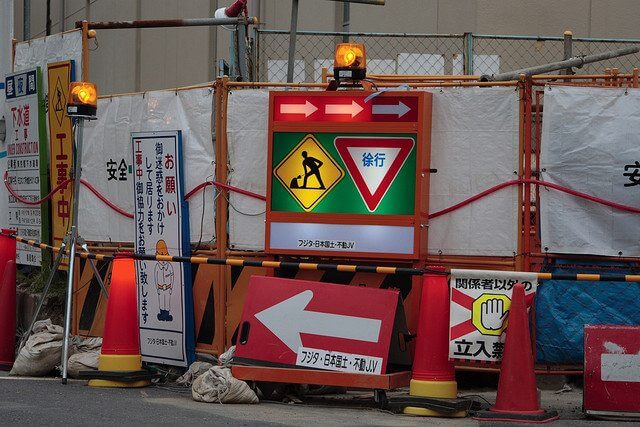Change orders are common to construction projects. After a project contract is agreed upon, and the construction plan and schedule have been finalised (including the schedule of values in accordance with works needed to be completed), the project owner may decide that the initial plans don’t meet his demands or the architect may detect a non-conformity that needs to be fixed.
An alternative approach may be suggested by the project owner or a solution may be recommended by the concerned stakeholder. Whatever is the case, it is important to know how you can more effectively handle a change order as it can change your project both time and money.
What is a change order in construction?
In construction, a change order is an aspect of the change management process wherein changes in the construction contract, project scope, project design, construction site conditions, or project schedule are implemented following the approval of the client, contractor, and other relevant project stakeholders (architect, engineer, etc.).
A change order is additional work or work omitted from the original construction plan, which completely changes the original contract amount and can have a direct effect on the project completion date.
Read also: Excel spreadsheets in construction: It’s time to let them go
It may also compel the contractor or project manager to tackle crucial changes to the ongoing construction project. Usually, the construction contract has provisions about how the change order process should proceed. But things can always get messy if the latest updates are not communicated in a timely and standardised manner.
What causes a change order
There are many factors that can trigger a change order. Below you can find some of the most common causes:
- Incorrect estimations of the work activities in the project.
- Problems, inefficiencies, and drawbacks discovered by the project owner or the project team that require some kind of deviation from the initial plan.
- Inefficiency and inability by the project owner or project team to deliver jobs within budget and schedule, thereby requiring additional money, time, and resources.
- Additional features or elements recognised and implored over the course of the project.
- Contractors offer the lowest possible bid price to get chosen for a project but with the plan of adding work items to the original plan at a later time after being appointed. This kind of practice causes complicated change orders that result in huge expenses from unconsidered works and fees.
Once the needed changes are identified, the project manager would create the change order that explains and describes what new work or alteration job can be carried out and undertaken (or in some cases, jobs that are taken out of the process) alongside the budget or price required to complete the new work. Upon the submission and approval of this change order, it serves to amend the original contract wherein the change order is now part of the contract.
Aside from changing the project scope, project schedule, and end product, change orders can also impact your accountability and liability, and put your payment at risk. This is why standardised systems and processes coupled with data-driven decision making and a central information repository can keep your project safe and give you control over the whole process.
What is the difference between change order and variation order?
The terms change order and variation order are often used interchangeably. As far as we know, there is no standard definition and the meanings vary from project to project and from region to region. The meaning would usually depend on the definition set in the contract.
However, in common practice, a variation order consists of changes and alterations that are minor with no impact or change to the end cost or are temporary variations from the design documents that do not crucially impact the construction project as a change order.
Legally, the term variation refers to an agreement supported by consideration to alter some terms of the contract. Standard forms of contract usually have provisions for the contract administrator (this could be the architect, engineer, or project manager) to order variations, which allows them to administer and implement the alterations without changing the contract.
Variation orders usually include:
- Design alterations
- Quantity alterations
- Quality alterations
- Working conditions alterations
- A sequence of work alterations
How do you write a change order in construction?
A typical change order template contains all key pieces of information needed to approve the change. It is a complete change order form used to implement changes in work within a project agreed to by the owner, contractor, and architect. If the contract does not indicate a specific change order form to use, the contractor can choose to write one up himself, as long as all key information is included.
In a nutshell, here is all the information you need to include:
1. Project information
Make sure to include all relevant project information including:
- Project name and address
- Contract information including contract number and contract start date
- Project owner name and address
- Architect name and address
- Information including change order number and date of the change order
- Contractor name and address
The information collected here is important in the effort to link the change to a specific contract, especially when dealing with large commercial projects or with government projects.
Find here: 5 steps to prevent common construction schedule delays
2. Details of the changes to the contract
Provide all descriptions of all changes to the original contract. Provide as much detail as possible including details of proposed changes and their corresponding costs. Be as specific as possible. Attaching photos, drawings, or documents that support the reason for the change is the best practice.
3. Cost and schedule changes to the contract
Provide all important changes to the cost and schedule including:
- The original contract amount for the work (original contract sum or guaranteed maximum price)
- Net change by previously authorised change orders (this value is 0 if it’s the first change order)
- Contract sum or GMP prior to this change order (this is the total of the original contract sum and the net change by previously authorised change orders)
- Contract sum will be increased/decreased/unchanged by this change order in the amount of (the total cost of the current change)
- New contract sum or GMP including this change order (new total contract sum or GMP after accounting for current change order, which is the sum or difference of the contract sum/GMP prior to the current change order and the total cost of the current change)
- Contract time will be increased/decreased/unchanged (provide how the change order will impact the performance time in terms of days)
- The new date of substantial completion (add or subtract the number of days affected by the change order to/from the contract’s original date of substantial completion)
4. Signatures
Without the signatures of the architect, contractor, and owner, your change order form is not valid for execution. Remember, a change order is an amendment to the original contract, so it should be validated by all relevant parties.
Upon execution of a completed change order form, it is indicated that all terms of the change have been agreed upon, including changes in the contract sum and contract time.
How do you handle change orders?
Change orders should be handled with the utmost importance. Remember, the construction site is such a dynamic and unpredictable work environment. Once a project gets up and running, it does not always go precisely as planned.
Unforeseen issues arise with owners and stakeholders changing their minds. These changes are necessary to guarantee the successful completion of a construction project. And, more importantly, these changes should be communicated as quickly as possible to the right parties. This approach will reduce downtime and make your project less vulnerable to sudden alterations.
Furthermore, change orders enable the owner and contractor the ability to address problems and make changes as they come up while avoiding the heavy task of rewriting the entire contract. It is imperative that you document and manage your change orders in an accessible manner for easy cross-referencing and for keeping everyone in the project team on the same page.
How to report interruptions and make changes quickly
Standardising your change order handling process will enable your team to keep your project on time and budget despite unforeseen alterations that could normally be the source of unspeakable delays and costly disputes.
Having the right framework to flag critical problems and report interruptions as soon as they emerge is the key to making the necessary changes quickly. Eventually, that quick response compounds to reduced delays, and timely and on-budget deliveries.




